Underwater Diving: 15 Essential Tips
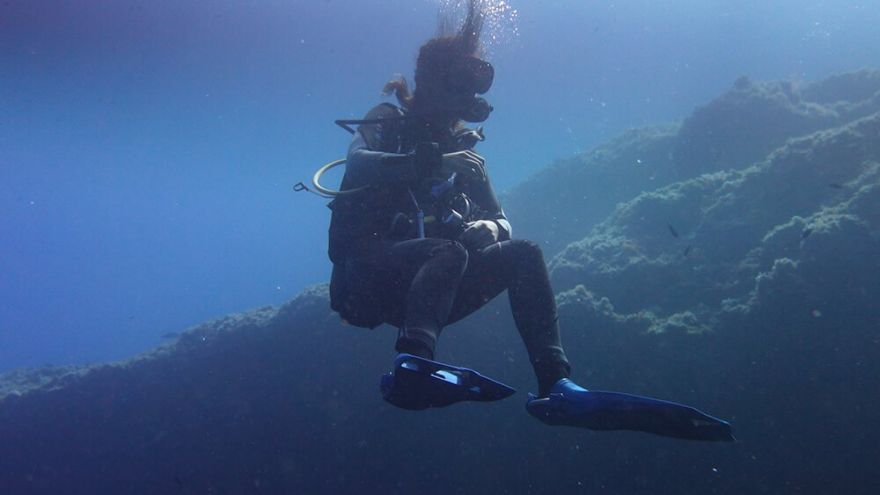 Underwater Diving: 15 Essential Tips
thegearhunt.com
Underwater Diving: 15 Essential Tips
thegearhunt.com
The thing about scuba diving is that you can do it for decades and still learn new things about that which you are trying to explore, yourself, your gear, and your companions. As time goes by, more information is always becoming available regarding all of the components involved with diving, and as our understanding grows, the trips get easier, and the experience becomes one that is much more enriched. The following tips will make the experiences you have with diving quite a bit easier and this means that you will be able to have more fun.
Only Invest in the Equipment that can be Counted On
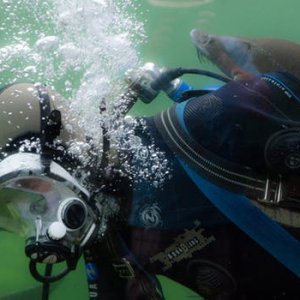 Typically, scuba is an activity that is equipment intensive. It makes it necessary for you to have at least a little bit of technical understanding, as well as requiring divers to have equipment that will be appropriate for whatever conditions they are planning to be diving in. While that doesn’t necessarily mean that you should break the bank for each piece of equipment you need, the reality of it is that you should always get the best that you can possibly afford. If you do this, you won’t find yourself replacing parts of your gear before they even get used a time or two.
Typically, scuba is an activity that is equipment intensive. It makes it necessary for you to have at least a little bit of technical understanding, as well as requiring divers to have equipment that will be appropriate for whatever conditions they are planning to be diving in. While that doesn’t necessarily mean that you should break the bank for each piece of equipment you need, the reality of it is that you should always get the best that you can possibly afford. If you do this, you won’t find yourself replacing parts of your gear before they even get used a time or two.
Regulators
This is the most important part of any scuba diver’s gear. This is the part that allows you to get the air that you need once you are underwater. For that reason alone, it should be self-explanatory that you need to get one as high performance as possible. If you do that, it will ensure that the regulator will be able to be used in a variety of applications and meet the requirements for a variety of conditions and locations. As an example, a regulator that will work well regardless of the temperature of the water will cover all of your basis for the next few years and won’t need to be replaced as soon as your skill increases.
Octos (Alternate Sources of Air)
This is a piece of safety gear. It will be put into action if one of your diving buddies runs out of or low on air. Most of the time, divers are trained with one that features a hose that is wrapped around the right side of the rib cage. The second stage will be secured within that triangle on the bottom of your chin and run to the lower corners of your rib cage.
One great way for divers to streamline their gear while also maintaining that alternate source of air is to get one that will integrate right into the BC. It should attach right on the left side of your BC. and will either be used in conjunction with your inflator hose or it will completely replace your inflator.
Computers
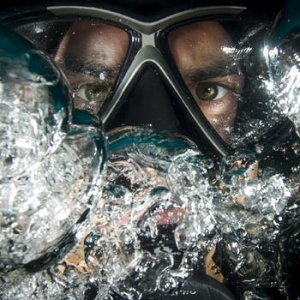 Dive computers are wonderful time savers and sources of information. This is a piece of gear that is actually a system to manage information. The dive computer will display information related to the dive you are on that is critical, while in surface mode, it will also allow you to view each of your previously logged dives as well as allowing for simulations to be run on dives that are upcoming. These are available as units that can be mounted on your wrist, or in consoles that come with a few other instruments, or even as units that use a refractor, so they can be deployed quickly. The last type will be tethered.
Dive computers are wonderful time savers and sources of information. This is a piece of gear that is actually a system to manage information. The dive computer will display information related to the dive you are on that is critical, while in surface mode, it will also allow you to view each of your previously logged dives as well as allowing for simulations to be run on dives that are upcoming. These are available as units that can be mounted on your wrist, or in consoles that come with a few other instruments, or even as units that use a refractor, so they can be deployed quickly. The last type will be tethered.
Some of the dive computers will even integrate the air function that remains into their display. The rigs that are wireless/hose-less will even mean that the rig has one less hose. When you use these in conjunction with the Alternate Air Sources that are BC integrated, you will only have 2 hoses. Like this, the unit is streamlined, lightweight, and compact.
Relax on the Dive
The excitement of making a dive and a trip make some people burst into frenzied activity. This attitude of excitement can mean that you make rapid fin kicking and arm movements, which then causes your breathing to speed up and this can prematurely deplete your supply of air. When this happens, your dive will be cut short. Short, rapid trips over areas can mean that most of the features and animals that make the dives so interesting were hurried past and not fully noticed.
On the way to the bottom, divers need to maintain a buoyancy that is neutral. Once they are on the bottom, they need to check all of their gauges and signal to each other. This is a short procedure that will allow for the group to remain together so that nobody is playing catch up. It also allows everyone the chance to become acclimated to the new environment while taking a few deep breaths before they calmly set out on the route that was planned. With a group that is more relaxed, the dive can last a bit longer, everybody will be able to see what they came to see, and divers won’t be as fatigued once the dive is over.
Weight Yourself Properly for the Area
When you will be diving in a new site, do a buoyancy/weight check with your equipment that you will be using for the dive. You can either do this in a pool before you set out, or in a controlled, shallow environment when you reach your destination. On trips to warmer waters, divers will need wetsuits that are much thinner than those that they will need in cold water environments. This means that less weight will be needed. Divers who are over-weighted can have issues with staying off the bottom, and this can harm the animals down there. They can also have issues with remaining streamlined while they are down there, and this can waste both air and energy.
Buoyancy Control
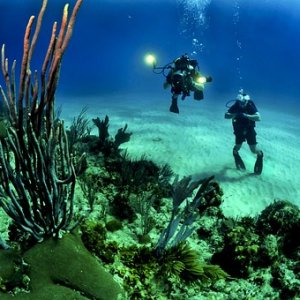 Before you get in the water, you need to fill the BC enough for it to be able to float at the surface before you descend. This will allow for any adjustments of the gear that either you or your dive buddies are using so that you can all go down as a group.
Before you get in the water, you need to fill the BC enough for it to be able to float at the surface before you descend. This will allow for any adjustments of the gear that either you or your dive buddies are using so that you can all go down as a group.
While you are descending, you should maintain a buoyancy that is slightly negative if you want your descent to be one that is controlled. Once you reach the desired depth, you can begin to establish buoyancy that is neutral. Divers will need to orient themselves at a position that is far enough from the bottom that silt won’t be stirred up and animals won’t be disturbed. This will maintain the optimal amount of visibility while giving divers a great vantage point from which they can scan the area for animals and points of interest.
Properly Adjust Your Equipment
Taking the time above the surface to ensure that each piece of your equipment is properly adjusted before you even get in the water can save you a bit of time once you do get in. Make sure that each of the straps for your fins, mask, and BC aren’t twisted, and that all of the quick releases are snug and shut while not being restrictive. Mask straps that are overly tight can cause headaches as well as a ring right around your face. Fin straps that are twisted will not be comfortable for your ankle and can cause the release to fail, meaning that you could lose it in the water.
Divers also need to ensure that all of the gear is set up to where they will have easy access to D-ring storage and pockets. This will allow you to be able to access anything you take with you.
Never go Beyond the Limitations of Your Equipment or Skills
Due to there being so much water around the globe, there is quite a large diversity of conditions in which you can dive. You might like shallow reefs in warm water that don’t have much of a current, or icy waters up north where the currents can be fierce, or anything that falls in between the two. With the right training and equipment, you will be able to have fun safely where others might not ever be able to go. If you don’t have the right training and equipment, you might find yourself in dangerous and stressful conditions. Diving is an activity that should be fun and learning any new skill can be fulfilling. If you want your adventures to be relaxing and safe, ensure that you have the training and equipment for anything that might happen.
Take Pictures
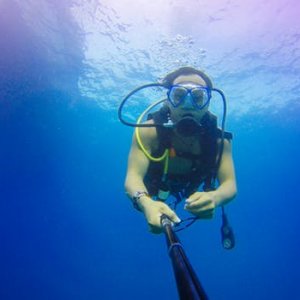 Images and photographs of all sorts have been able to describe areas of the world for many thousands of years. The underwater cameras of the modern world now allow us to capture moments below the surface that no one would ever be able to see otherwise. This is a fantastic way to enrich your diving experiences even more.
Images and photographs of all sorts have been able to describe areas of the world for many thousands of years. The underwater cameras of the modern world now allow us to capture moments below the surface that no one would ever be able to see otherwise. This is a fantastic way to enrich your diving experiences even more.
Dive with Both Locals and People You Know
Diving is a fantastic way for you to meet interesting and new people. Having a few dive buddies that you are familiar with and who have dive practices and likes that are similar to yours can also make the experience one that is even more fun. Their objectives for the dives will run parallel to yours and won’t cause any sort of friction between their goals and yours during the dive. For example, a pair of buddies who are looking for certain species of fish to catch on film will be able to work as a team.
If you will be diving in an area that is new to you, you should find a local diver or guide with experience so that they can show you the best locations and give you a bit of info regarding the local conditions and animals.
Take Courses that Teach How to ID Animals
There are seminars and classes that you can take before each dive. Be sure that you become familiar with any wildlife you might encounter either below or above the surface before you dive in a new place. It can be much more exciting to find animals you might be familiar with than to come across animals that you have no idea about. Knowing the habits and behaviors of the animals will allow for you to properly react to it for any interactions or photo ops. It can also help you locate particularly interesting ones.
Locate Specialties You Prefer
 Take a few courses that go beyond the basics of diving. Continuing to develop your skills can allow you to find even more enjoyment when you are diving. There are quite a few levels of certifications and they each offer their own rewards. If you will be traveling to new dive sites that have conditions that you aren’t familiar with, go to a local shop and take a class that will give you the knowledge and skills that will allow you to enjoy the dive even more. You might also need to take a bit of new gear that you might want to familiarize yourself with before you go. This all adds up to a dive that will be easy to adapt to and more enjoyment.
Take a few courses that go beyond the basics of diving. Continuing to develop your skills can allow you to find even more enjoyment when you are diving. There are quite a few levels of certifications and they each offer their own rewards. If you will be traveling to new dive sites that have conditions that you aren’t familiar with, go to a local shop and take a class that will give you the knowledge and skills that will allow you to enjoy the dive even more. You might also need to take a bit of new gear that you might want to familiarize yourself with before you go. This all adds up to a dive that will be easy to adapt to and more enjoyment.
Don’t Rush
It is normal for divers to get excited about being able to get into the water for any new experience. This can lead to hurrying through things from the very minute the gear is unloaded. Even divers who are more experienced can forget basic parts of their equipment or a procedure or two, and this can lead to stress on the dive. A methodical and relaxed approach to the dive from the minute you gear up until it is over, and you take your gear off can ensure that nobody and nothing is left behind or forgotten.
Hand Signals are Critical
If you know how to signal to your buddies on a dive, it can make the dive one that is quite enjoyable. Diving puts you into an environment where anything you say will be lost as bubbles headed to the surface. This means that it is important to have a way to communicate with your buddies while you are down below. The easiest way to do this is by using hand signals that can be recognized from a bit of distance under the clear blue water. There are some divers who even use forms of sign language to have conversations about the animals and conditions that they are witnessing.
Have Fun
On behalf of everyone here at TheGearHunt.com, I wish you safe and happy diving!
Sources
- Thought Co, Scuba Diving Basics: Skills and Techniques
- Scuba Diving, 5 Diving tips for Saving Air
- Travelsauro, 30 Scuba Diving Tips for Beginners
- Scuba-Diving-Smiles, Scuba Diving Tips















